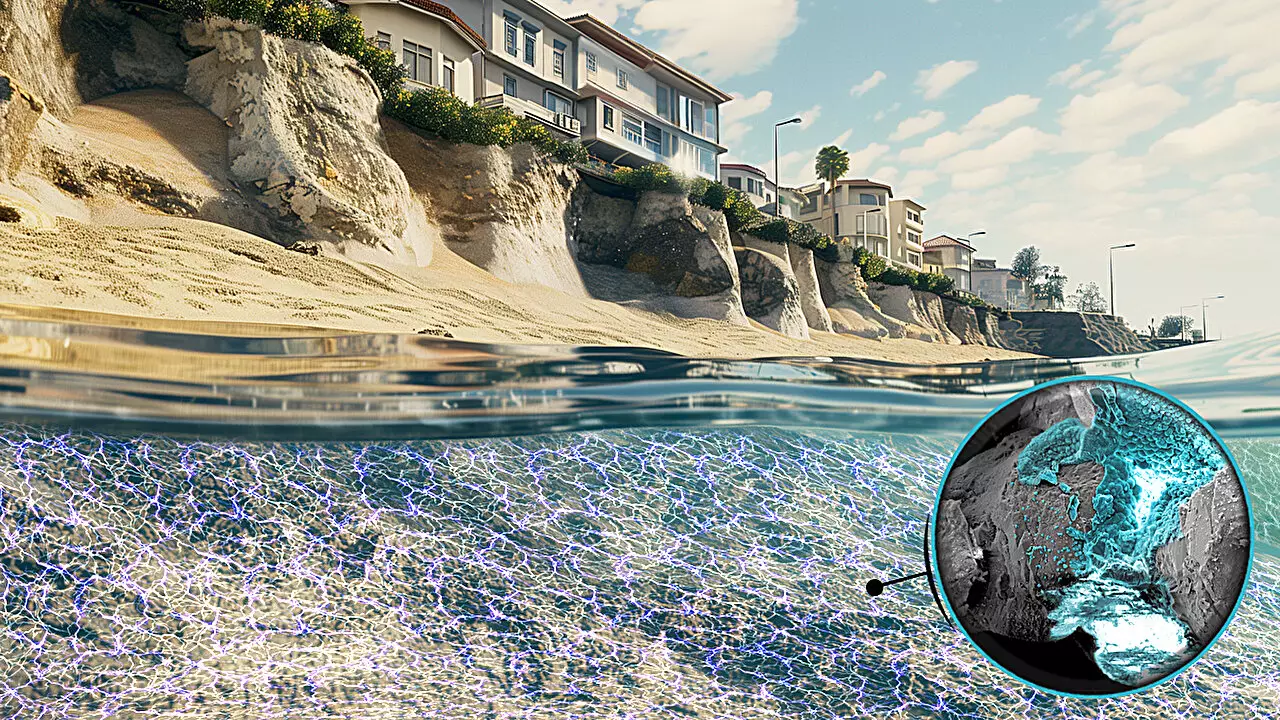As climate change accelerates, coastal communities around the world find themselves on the front lines of an existential crisis. Rising sea levels and increasingly severe weather patterns have led to significant erosion, threatening not only ecosystems but also the livelihoods of billions of people who call coastal areas home. Traditional methods of coastal protection—such as building sea walls or injecting cement into the sand—while effective in some instances, often come with steep financial and environmental costs. In an encouraging development, researchers at Northwestern University have unveiled a groundbreaking method that employs electricity to fortify coastal sands, potentially revolutionizing the way we address the issue of erosion.
The Northwestern study draws inspiration from nature itself—specifically from bivalves like clams and mussels, which have developed remarkable adaptations to thrive in marine environments. These organisms utilize minerals dissolved in seawater to create strong shells which protect them from predators and environmental harm. Similarly, the research team, led by Alessandro Rotta Loria, has managed to replicate this natural process by transforming loose marine sands into a solid, rock-like material using a mild electrical current. This innovative technique sits at the intersection of biology and engineering, demonstrating how understanding natural processes can lead to sustainable technological advancements.
The process hinges on a fundamental understanding of chemistry and the unique properties of seawater. When a low-voltage electrical current (2 to 4 volts) is applied to seawater interspersed with sands, it initiates a series of chemical reactions that lead to the precipitation of solid minerals like calcium carbonate. This mineral acts as a natural cement, binding the sand particles together and effectively reinforcing the substrate. Unlike conventional methodologies, which often involve invasive, high-pressure techniques, this approach is both gentle and efficient, cementing the sand with minimal environmental disruption.
In experimental settings, this electrically induced binding has proven effective across various types of sands, including silica, calcareous, and even iron-rich sands. The immediate transformation from loose granules to a cohesive solid represents a promising leap forward for coastal engineering, as the resulting material has been described as stronger and more resilient than traditional concrete, paving the way for durable coastal infrastructures.
The implications of erosion due to climate change are dire, as a study by the European Commission indicates that nearly a quarter of Earth’s beaches could disappear by the end of this century. The economic repercussions of such loss could be staggering, with coastal erosion costing communities billions annually through lost property and infrastructure. Current strategies often resemble a band-aid solution rather than a long-term fix, leading to the necessity for innovative alternatives like the one explored in this research.
By focusing on a method that avoids the destructive ramifications of traditional coastal defense systems, Rotta Loria’s work significantly alters the landscape of marine protection. Not only does this method eliminate the need for costly materials and construction, but it also allows for a more sustainable relationship with our coastal environments.
One of the remarkable aspects of this new method is its efficiency. Cost estimates reveal that creating electrically cemented sand could range from merely $3 to $6 per cubic meter, a stark contrast to traditional methods that might run up to $70 for the same volume. The research team’s calculations indicate that the process can be performed at a fraction of the cost while enhancing the long-term resilience of coastal structures against the onslaught of erosive forces.
Moreover, one of the main advantages lies in the reversibility of the process. If conditions change or communities decide against solidifying the sand, the electrical approach allows for easy dissolution of the minerals, offering adaptability that conventional methods lack. This reversibility means coastal managers can dynamically respond to ecological needs without leaving permanent scars on the environment.
The promising results observed in laboratory conditions have spurred interest in real-world applications. With future plans to test this technology on actual beaches, there’s anticipation surrounding its effectiveness and scalability. If proven successful, this method could potentially reshape coastal management practices worldwide, providing a sustainable foundation to combat the accelerating threat of climate change.
As communities brace for the consequences of rising sea levels and frequent storms, the intersection of innovation, sustainability, and biology presents a hopeful narrative. This newfound method of using electrical stimulation to solidify marine substrates stands to bolster coastal defenses and could emerge as a standard practice in the fight against erosion. The future of our coastlines may very well depend on the creative applications of natural processes harnessed through human ingenuity.

